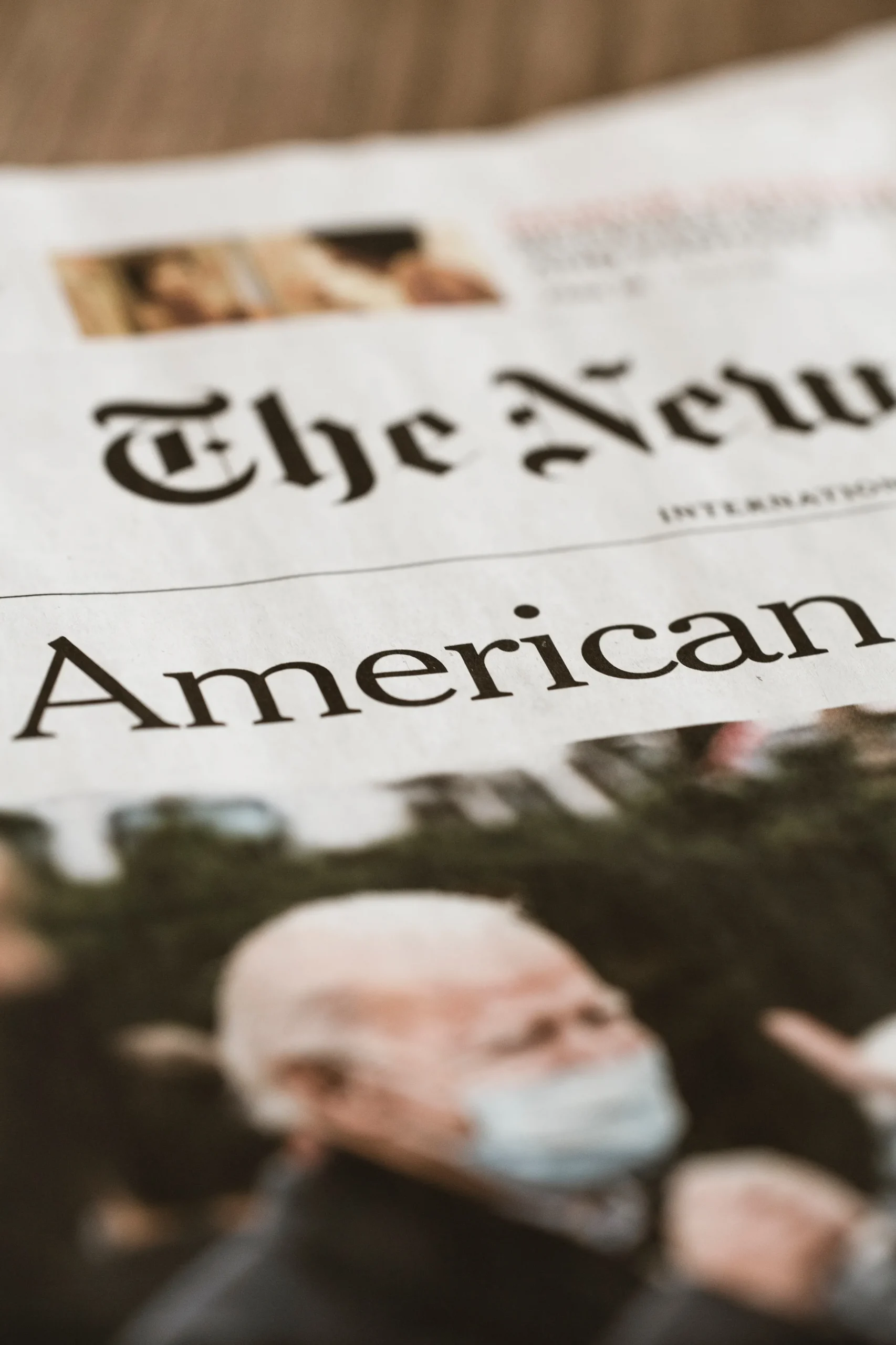The Political Affiliation Of The New York Times
The political leanings of major news outlets like The New York Times have long been a topic of debate and discussion. With the proliferation of partisan media in recent years, understanding potential media bias is more important than ever for informed news consumption.
If you’re short on time, here’s a quick answer: The New York Times editorial page is considered liberal-leaning, while their news coverage is seen as relatively centrist compared to other papers.
In this comprehensive article, we will analyze multiple factors to evaluate where The New York Times stands politically, including ownership, editorial positions, scandals and controversies, assessments from media watchdog groups, and more.
Ownership and Leadership
The New York Times, one of the most influential newspapers in the United States, has a long history of being owned and operated by the Sulzberger family. The family’s involvement in the newspaper dates back to 1896, when Adolph S. Ochs purchased the newspaper and became its publisher.
Since then, the paper has been passed down through the generations of the Sulzberger family, with Arthur Ochs Sulzberger Jr. serving as the publisher from 1992 to 2017.
The Sulzberger Family
The Sulzberger family has been deeply committed to maintaining the integrity and independence of The New York Times. They have played a crucial role in shaping the editorial direction and journalistic standards of the newspaper.
Over the years, the Sulzbergers have strived to ensure that the paper remains unbiased and adheres to the highest standards of journalism.
Arthur Ochs Sulzberger Jr., during his tenure as the publisher, emphasized the importance of journalistic ethics and the need for the newspaper to hold those in power accountable. Under his leadership, The New York Times won numerous Pulitzer Prizes, reinforcing its reputation as a reliable and respected source of news.
Political Donations
While The New York Times has a reputation for being a liberal-leaning newspaper, it’s important to note that the Sulzberger family’s political donations have been diverse. According to public records, members of the Sulzberger family have made donations to candidates from both major political parties.
These political contributions reflect the family’s commitment to supporting candidates who share their values and beliefs, rather than a specific political affiliation. It is worth noting that political donations made by individuals do not necessarily reflect the editorial stance of a newspaper.
It is also important to mention that The New York Times has a strict policy regarding the separation of its news reporting and editorial opinions. The newspaper’s journalists are expected to adhere to rigorous journalistic standards and maintain objectivity in their reporting.
As with any media organization, it is essential to approach news sources with critical thinking and consider multiple perspectives. The New York Times, like any other newspaper, is a product of a complex interplay of various factors, including ownership, leadership, and the personal beliefs of its employees.
Editorial Positions
The New York Times is one of the most influential newspapers in the United States and has a long history of taking strong editorial positions on various political issues. The newspaper’s editorial board consists of a group of journalists and opinion writers who collectively determine the paper’s official stance on important matters.
Endorsement History
The New York Times has a tradition of endorsing political candidates during election seasons. Their endorsements are seen as significant endorsements within the political landscape. The newspaper carefully evaluates each candidate’s policies, experience, and qualifications before making a decision.
They consider the potential impact of each candidate’s platform on issues such as the economy, social justice, climate change, and foreign policy. The New York Times’ endorsements are highly anticipated and often generate a lot of discussion and debate.
Over the years, the newspaper has endorsed candidates from both major political parties, including Democrats and Republicans. While the majority of their endorsements lean towards the Democratic Party, they have also endorsed Republicans in certain cases.
The New York Times’ endorsement is not solely based on political affiliation but rather on the candidate’s alignment with the values and policies that the newspaper deems important.
Columnists and Guest Contributors
In addition to its editorial board, The New York Times features a diverse group of columnists and guest contributors who offer their own perspectives and analysis on various political issues. These individuals come from different backgrounds and have different political leanings, providing readers with a range of viewpoints and opinions.
The columnists and guest contributors at The New York Times include well-known journalists, scholars, and experts in their respective fields. They write on topics such as politics, economics, social issues, and international affairs.
Their articles and opinion pieces add depth and nuance to the newspaper’s coverage, allowing readers to engage with different ideas and arguments.
It is worth noting that the opinions expressed by columnists and guest contributors are their own and do not necessarily reflect the official stance of The New York Times. The newspaper values a diversity of perspectives and encourages healthy debate and discussion among its readers.
Scandals and Controversies
Jayson Blair Plagiarism Scandal
The Jayson Blair plagiarism scandal rocked The New York Times in 2003 and resulted in a huge blow to the newspaper’s reputation. Blair, a former reporter for the Times, was found to have fabricated and plagiarized numerous stories.
This scandal not only raised questions about the newspaper’s editorial oversight but also highlighted issues of racial bias and accountability within the organization. The incident led to a public apology from The New York Times and a thorough investigation into their editorial practices.
Judith Miller WMD Coverage
Judith Miller’s coverage of the alleged weapons of mass destruction (WMD) in Iraq prior to the US invasion in 2003 is another controversial episode in The New York Times’ history. Miller, a Pulitzer Prize-winning journalist, wrote several articles that supported the Bush administration’s claim of WMDs in Iraq.
However, these claims were later proven to be false. The incident not only damaged the credibility of Miller but also raised questions about the Times’ editorial standards and its role in promoting the war narrative.
James Bennet’s Resignation
James Bennet’s resignation as the editorial page editor of The New York Times in 2020 was a significant controversy that brought attention to the newspaper’s internal dynamics. Bennet’s decision to publish an op-ed by Senator Tom Cotton advocating for military intervention during the Black Lives Matter protests sparked widespread outrage among Times staff and readers.
The incident led to an internal review of the newspaper’s editorial processes and renewed discussions about journalistic integrity and diversity within the organization.
Assessments from Media Watchdogs
AllSides Rating
One of the most well-known media watchdogs, AllSides, provides an assessment of the political affiliation of news outlets. According to AllSides, The New York Times is rated as leaning left. This means that the newspaper tends to have a liberal bias in its reporting and editorial content.
However, it is important to note that AllSides uses a methodology that takes into account various factors, including the opinions of readers and staff members, as well as the content of the articles themselves.
Ad Fontes Media Rating
Another media watchdog, Ad Fontes Media, also offers an assessment of the political bias of The New York Times. According to Ad Fontes Media’s analysis, The New York Times falls into the “skews left” category.
This means that while the newspaper may have a left-leaning bias, it also provides a substantial amount of neutral and balanced reporting. Ad Fontes Media uses a methodology that evaluates news articles based on their reliability and bias, taking into account factors such as sourcing, language, and context.
It is important to note that media watchdog assessments are subjective and can vary. Different organizations may use different methodologies and criteria for evaluating political bias. Therefore, it is recommended that readers consult multiple sources and form their own opinions based on a wide range of perspectives.
Conclusion
In conclusion, while no news source is perfectly unbiased, the preponderance of evidence suggests The New York Times editorial page leans left, while their news coverage skews slightly left-of-center.
By evaluating factors like ownership, scandals, watchdog assessments, and more, readers can understand The Times’ general political alignment and read their reporting accordingly.
Of course, polarization and accusations of bias will likely continue around a prominent news source like The Times. But with a comprehensive perspective, readers can consume their news with eyes wide open.








